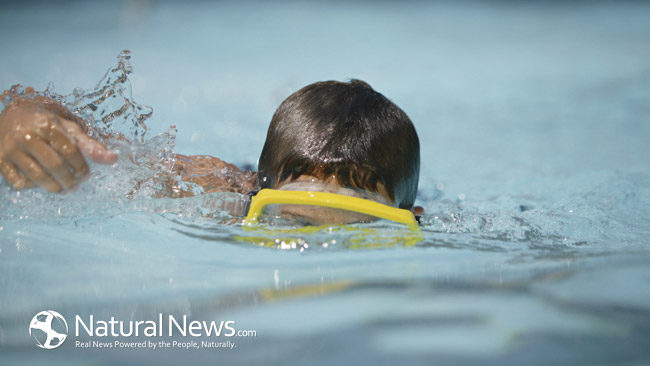Building a customized swimming pool requires the expertise of a professional contractor especially when the safety of your kids is paramount. A professional contractor knows how to design a swimming pool to enhance both your home and its landscaping. In addition, a professional will ensure that several safety features are included in the design to prevent injuries.
Here are some fundamental safety tips to bear in mind while your kids are enjoying themselves in the pool.
1: Never Swim Alone
Never allow your children to swim alone. Ensure that an adult is always there in the water with them. Children who are older, confident swimmers should always have a friend or an adult in the water with them.
Tip 2: Wear the Right Swimming Wear
Wearing the right swimming gear will help protect children in the water. When swimming, avoid wearing clothes that get heavy when wet. Inappropriate swimwear can drag children under water and make it difficult for them to get back up to the surface.
Tip 3: Know the Basic Swimming Procedures
Teach young children the basic swimming procedures. Teach them about the correct pool safety behavior. Older children should learn several things: how to keep afloat, how to jump and dive safely and how to recognize safe water depths. Basic safety swimming behaviors for all children regardless of their age include; keeping pool gates closed, not running on the edge of the swimming pool and being aware of the other persons who are in the water around them.
Tip 4: Know the Environment
Children love to jump and dive into water, whether it is a swimming pool, a lake, river or the ocean. This has often been the cause of many water accidents. Teaching children how to understand water depths, will help keep them safe in the pool, lake, river or ocean.
Tip 5: Use Floatation Devices Safely
Floating devices help keep children safe while swimming and include floatation suits and arm floaties. Older children benefit best from arm floaties. Flotation suits have built-in floatation devices. Never leave children wearing floatation devices unattended in a pool.
Tip 6: Hot Tub Safety
A hot tub temperature can get hot very quickly. Children left in hot tubs can suffer injury. Only older children should use hot tubs and only if the temperature does not get too hot. Never allow young children to play in hot tubs.
Tip 7: Learn CPR
CPR is cardiopulmonary resuscitation. Learning how to perform CPR is necessary for every parent. A knowledge of CPR will help to save the life of your child in the event of a drowning incident.
Tip 8: Respect the Rules
Teach your children the rules pertaining to swimming such as swim only where swimming is allowed, always swim between lifeguard flags when at the beach, don’t dive into murky or shallow water, never jump into water when others are swimming close by, and don’t swim alone.
Tip 9: Be careful of Cold Water
Cold water affects the body in different ways, especially children. Jumping into cold water can shock a child’s body, resulting in loss of breath, shaking, muscle cramping and increased heart rate. Jumping into very cold water can cause a child to become disoriented and can prevent the child from swimming to safety. Before allowing your child to jump in, check the water temperature.
Tip 10: Stay Educated
As you teach your child basic water safety guidelines, put them into practice yourself. Ensure that every family member learns to swim. Every family member can enroll in age-appropriate learn to swim courses to stay safe in the water. Update your training through the American Red Cross programs.
Note: Home pool is always the best alternative
Having a home pool is always the best alternative to public pools but only when the code guidelines are observed during the building process to disable our children the pool access unbeknownst to us in our absence as well as ensuring them a time of real joy thru increased security measures in our presence.





